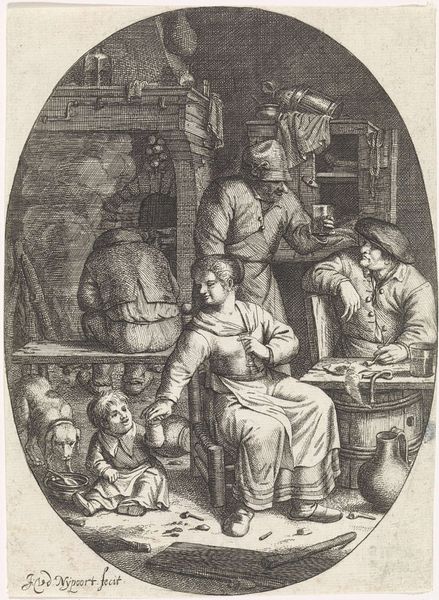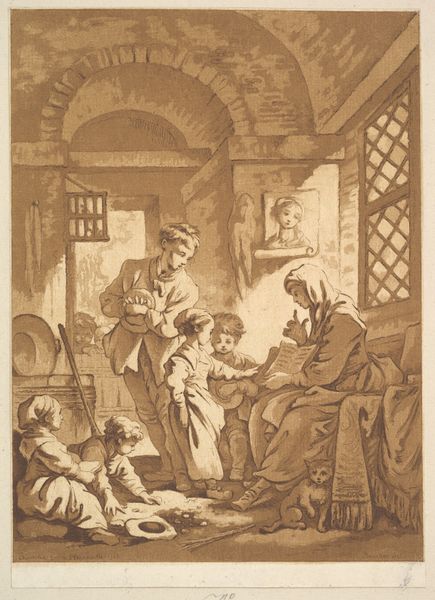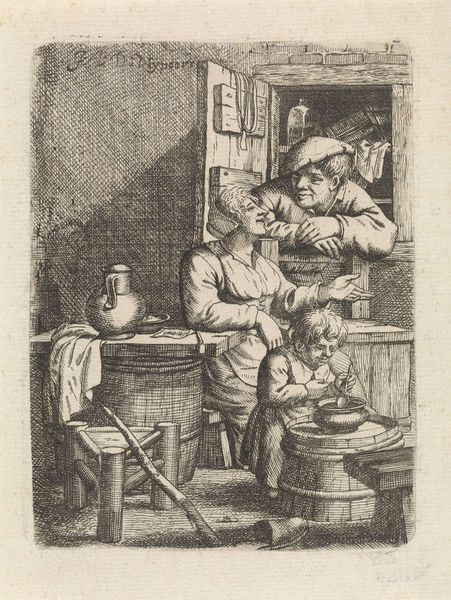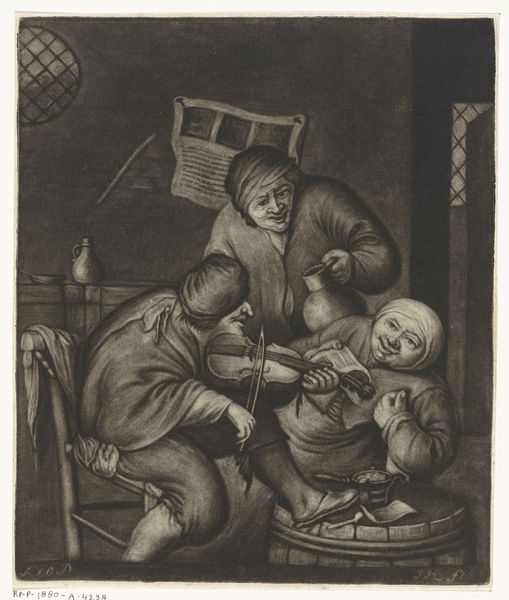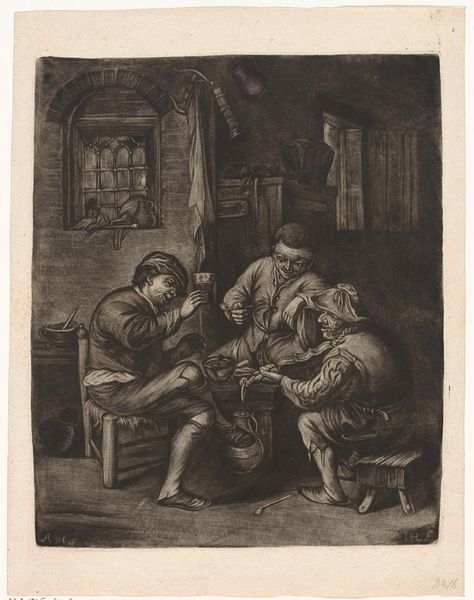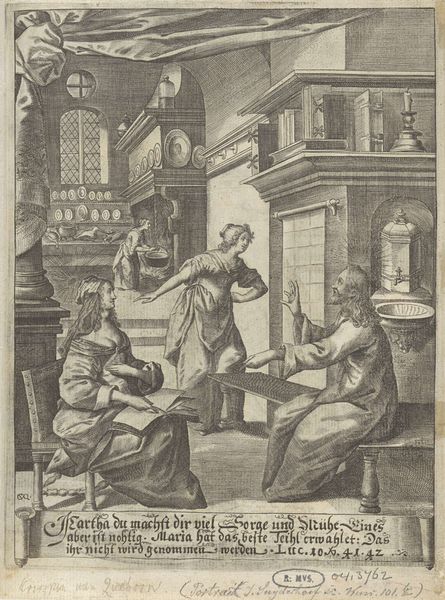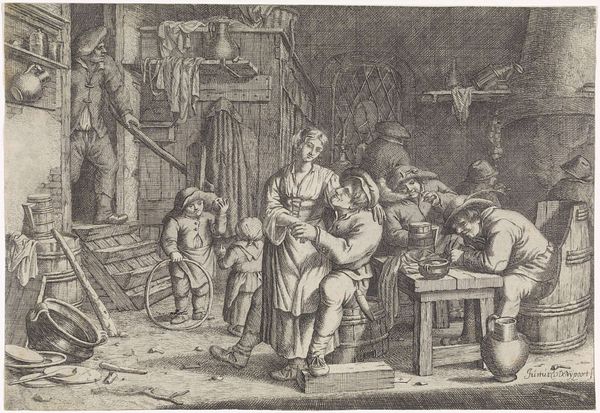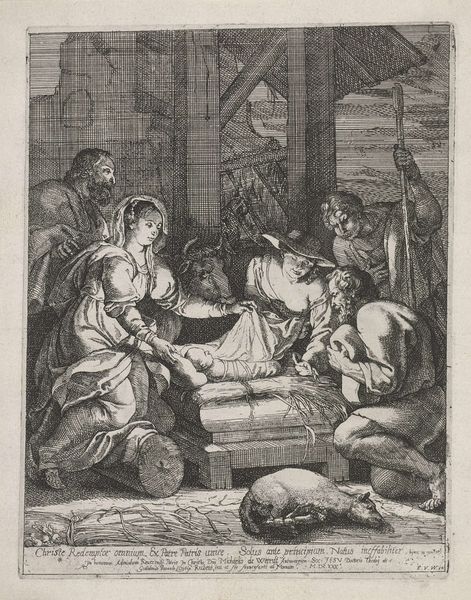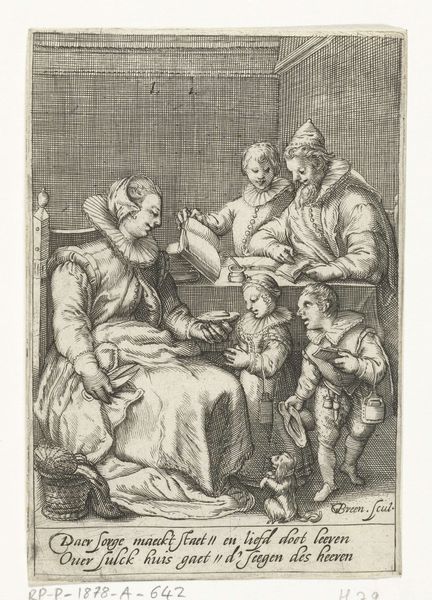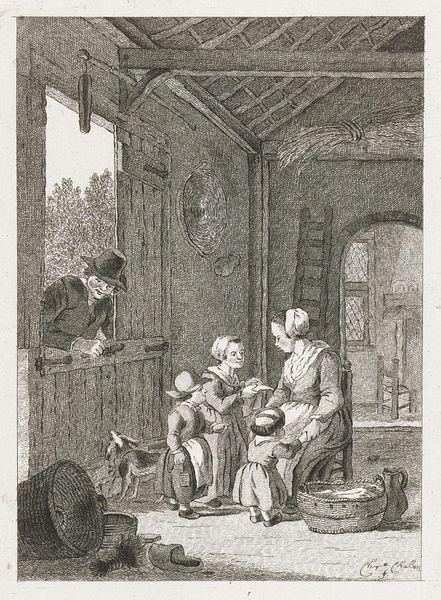
lithograph, print, etching
#
baroque
#
dutch-golden-age
#
lithograph
# print
#
etching
#
caricature
#
caricature
#
genre-painting
Dimensions: height 242 mm, width 185 mm
Copyright: Rijks Museum: Open Domain
Curator: Welcome. Here we have an etching entitled “Prentverkoper,” or “Print Seller,” which art historians place sometime between 1655 and 1700. It’s believed to be the work of Jan van Somer. Editor: Immediately, what strikes me is how cramped everything feels, despite being outdoors. The frame of the makeshift stall really compresses the space. You can almost feel the coarse texture of the prints and the slightly desperate energy of the hawker. Curator: That's interesting. I'm drawn to the caricatured faces on display. There’s a playful grotesqueness in how the figures are rendered, almost like folk demons. What might these distorted images represent to the viewer? Editor: I see them as commodities, and crude ones at that. They are objects manufactured, etched, and reprinted, readily available for purchase. Think of the materials – the ink, the paper – and the repetitive labor involved. How many of these had to be sold to make a decent wage? Curator: But isn't there a deeper cultural function here? Perhaps these aren't just objects, but social commentary made accessible. The exaggeration, the satire - could these be ways to negotiate social identities? Remember, caricature often serves to solidify in-group dynamics by mocking out-groups. Editor: I agree that images circulate meaning, but their mode of production shaped those meanings. And remember, printmaking enabled a broader audience to access such "social commentaries," altering the very dynamics of viewership and critique. Were the working classes able to access them, and were they about elites making fun of other groups, perhaps other occupations and classes? Curator: A vital point! The layering of symbols grows richer when we understand it democratizes images. Considering Jan van Somer was part of the Dutch Golden Age and also specialized in genre painting, he could've used this art to mock or emulate social gatherings and people of importance. The print maker appears well-fed and smug, which the potential buyers appear meek and less comfortable. It makes the class structures of that era obvious. Editor: Exactly. Thinking about the class structures that enable someone to sell and someone to buy...that tension adds another dimension to the experience of seeing this etching. It asks us to not only contemplate its themes, but its own existence as a saleable good. Curator: An insightful approach, emphasizing the convergence of image and object, content and material. Editor: Yes, seeing this print makes you really examine not just the art object, but also the societal conditions from which the art arises and into which it enters.
Comments
No comments
Be the first to comment and join the conversation on the ultimate creative platform.

